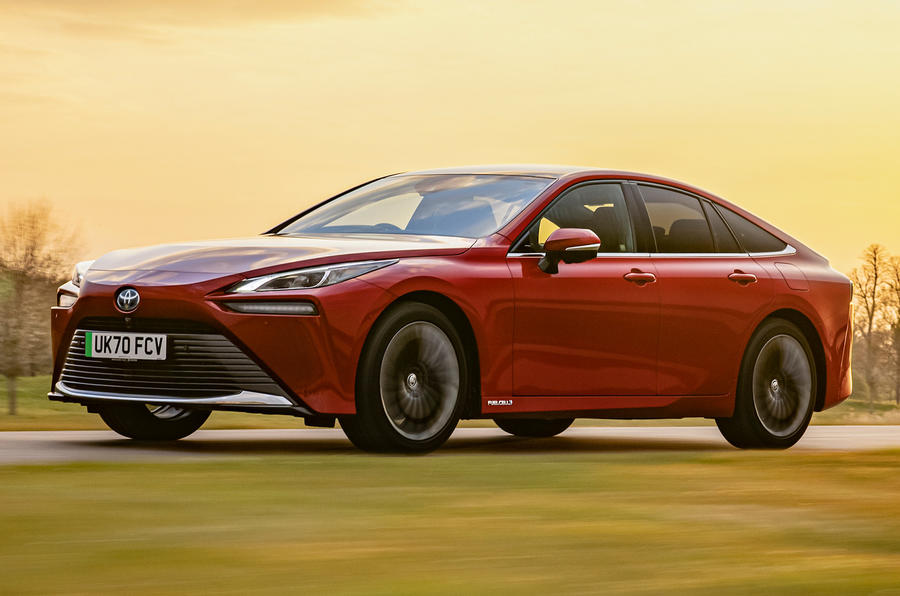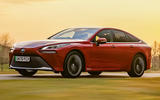What is it?
Before we talk about hydrogen cars (or FCEVs) and related topics such as their fuel cell stacks, refuelling infrastructure and role in a wider hydrogen society, let’s take a moment to reflect on how good the new Toyota Mirai looks.
Maybe it’s just me, but with its long nose and coupé-like roofline, there’s a whiff of final-gen Celica about it.
The styling may seem a frivolous place to start when considering a car that essentially serves to showcase a whole powertrain technology, especially one so comprehensively overhauled. But it’s important, and not just because its shape is honed for aerodynamic efficiency: Toyota clearly wants the new Mirai to stand out for more than how it’s powered.
Certainly you would never confuse the new Mirai for the original: it’s not only sleeker but also substantially bigger, due to the new GA-L platform. But it’s the changes to the powertrain that make it less a second-generation car, more an entirely new one.
The fuel cell stack, now sited under the bonnet, is smaller and lighter with 330 cells, down from 370. Output has increased from 153bhp to 180bhp, and drive is now sent to the rear, rather than front, wheels.
Moving the stack up front has made room for a third high-pressure hydrogen tank to be added, with the combined storage of 5.6kg of liquefied hydrogen enough to offer a range of around 400 miles. The three tanks are located in a T-shape, with two in place of the central transmission tunnel (which does limit leg space in the central rear seat), the other beneath the rear bench and boot.
There’s also a 1.24kWh lithium ion battery (the old Mirai featured a nickel-metal-hydride one) that stores captured regenerative energy and helps to smooth out the power the stack sends to the electric motor.
























































Join the debate
Add your comment
Fuel Cell Electric Vehicle tech seems to make sense for trains or very heavy vehicles, but it seems odd that Toyota are still pushing a FCEV car. If the hydrogen is made from natural gas (methane), then it's just another fossil fuel. If the hydrogen is made by using renewable electricity to produce green hydrogen, then the energy losses involved in converting electricity into hydrogen and then back into electricity in the fuel cell, make the car massively less efficient than just putting the electricity straight into an EV battery. About 60% less efficient, by some measures. So why are Toyota still trying to do this? Perhaps because the fossil fuel industry would have a role in hydrogen infrastructure, whereas they would be relatively sidelined if we all buy EVs. It's not surprising that one of Toyota's partners in this is a Japanese oil company.
pikkoz you nailed it, problem is Toyota will plough on losing millions along the way.
Sheer brilliance. Autocar's first six star car? It just might be.